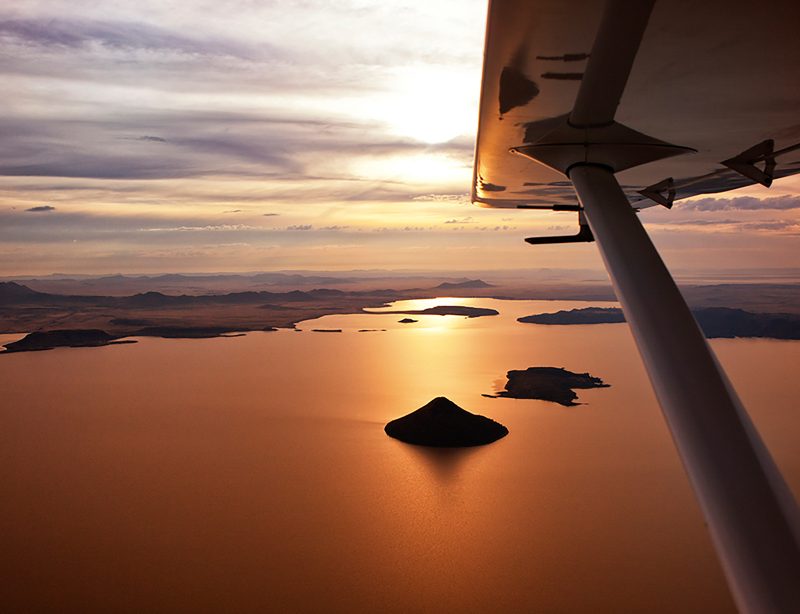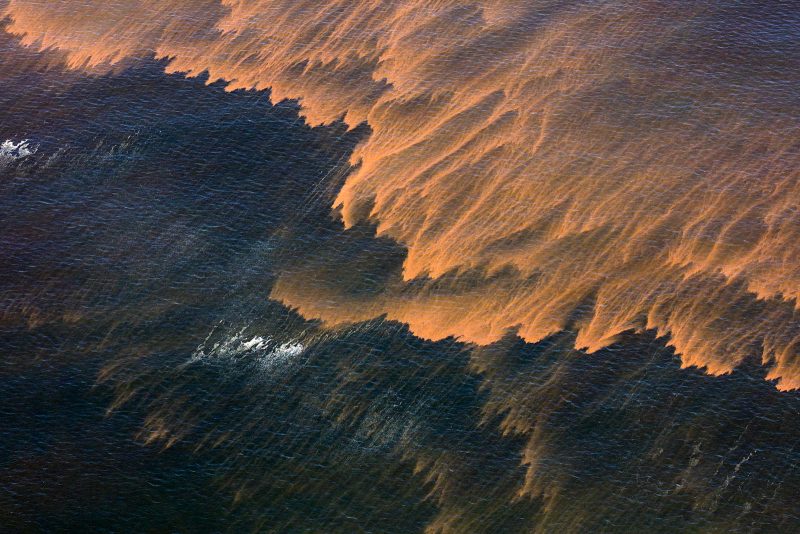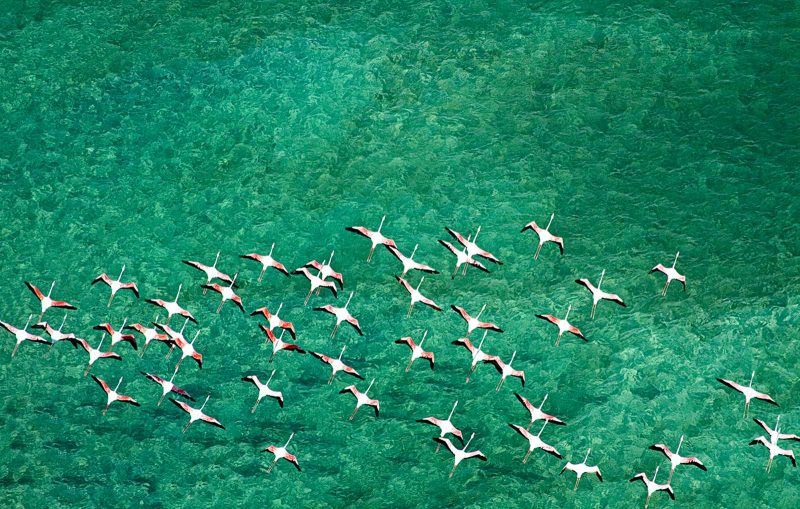Shooting From a Plane: Composition, Lenses, and Shot Choice

From the turquoise shores of Mozambique to the verdant waterways of the Okavango Delta, Southern Africa is a kaleidoscope of ever-changing contrasts. Boundless, vast, and teeming with life; it is a world of infinite richness, beauty, and complexity – and one I never tire of photographing from above. Each time I explore these lands of water and dust from the air, there is something new and beautiful to be discovered.
Entering the world of aerial photography can seem a little daunting for the uninitiated, but I think for the most passionate wilderness and wildlife photographers, the allure of getting into an aircraft and seeing their world from an aerial perspective will – at some stage – become an adventure one cannot pass up.



Aircraft and pilot
I have photographed from fixed-wing aircraft, helicopters, microlights, and gyrocopters over the years. For professional and comfortable aerial photography, it is essential that one has access to the correct aircraft. A high wing aircraft or helicopter with photographic windows – or with the door removed – would be my recommendation.
Having an experienced pilot that has done prior photographic work and has local knowledge is an absolute must. The pilot not only acts as a spotter, but also needs to have experience in putting you in the right place at the right angle for that perfect aerial shot.
The scene is passing beneath you at an average of 100mph, so you need to be able to converse with the pilot and make split-second decisions if you see something interesting you want to photograph.

Location
Aerial photography is as much about planning as it is about the actual process of photographing from above. You should have a clear plan of where and what you want to photograph, and at what time of day, and then embark on the grand treasure hunt to find the shot.
It is all about maximising your time in the air and ensuring you come back with some great images.

Working with light
Always aim to be in location when you are guaranteed to get the best light. Even if you are in the most spectacular location on Earth, if the light does not do the scene justice then you will likely be disappointed with the results.
The best light is always early mornings and late afternoon: those golden hours are where the light turns into magic. I find the still morning hours my favourite time to shoot, taking off with the dawn and being back down on the ground by no later than 10am. My advice is that, for the most part, do not even begin to think about taking photos until the sun is low in the sky.

Aerial photography is the only genre of photography where you move through and around light.
For example, when orbiting a subject such as an elephant in the crystal-clear water of the Okavango Delta, you will be able to photograph that elephant as front lit and back lit within a matter of minutes. You will need to compensate for the changes in light rapidly by altering your settings… and whatever you do, do not stop shooting when you are flying directly into the sun… I have taken some of my most beautiful images by going against all the rules.

Contrast
Play with light and shadow; be on the lookout for unusual lighting conditions that add mood or dramatise the scene, such as a storm rolling across the landscape or light pouring through a break in the clouds. High contrasts add drama and mood.


Composition
When viewed from above, the world is all about shape, colour, and perspective. Harness these aspects and you will create artistic and intriguing images.
Think about composition as much as possible and try to perfect it in the field. There is only so much you can do in post-production. There are certain techniques one can use to help in composition such as rule of thirds, but ultimately you need to train your eye to see the scene. If it does not look right in your viewfinder, then it will not look good in the final output. Practice will make this become second nature.
- Look for strong, solid lines such as roads or coastlines. Shoot directly above them to emphasise shapes and create abstract scenes.
- Compose your scene symmetrically by looking for recurring patterns and ‘balanced’ scenes.
- Isolate your subject against a uniform backdrop to emphasise its shape and size and draw the viewer’s eye.
- Exploit long shadows created by your subject when the sun is low to form dramatic scenes.
- Include a recognisable object such as a person, animal, or vehicle to accentuate the scale of your aerial image.



Camera and settings
I use high shutter speeds of 1/1000th and above to compensate for the speed and vibration of the aircraft. I shoot with a Canon 5DS R and a Canon R5, with my favourite lenses being the Canon 100-400 for wildlife and a wide-angle 16-35mm for those sweeping landscape shots.
Being technically proficient with your camera is important, but I am also a huge believer in learn the rules and then forget them all! It is good to learn your camera and the basic rules of photography, but do not let them limit you and stop you from thinking outside the box.
Photography is an intuitive art form which reflects what we find beautiful or interesting in this world. Some of the most beautiful images I have seen go against all rules. Get out there, have fun, experiment, and find your own style.

Shoot in raw format
If your camera can capture photos in raw format, then shoot in raw. The files contain much more detail and information, and give you far more possibilities in post-production without losing quality.
Also, if you are wanting to enter wildlife or landscape photography competitions then the judges will often request the raw files.
Read more: Don’t Delete Your Raw Files for DNG Format

Post-production
Even the most brilliant of photos require a little tweak here or there to give them that special something. No matter how advanced your camera is, it will not be able to capture the nuances of colour and light that the human eye can.
It is worth going on a photo editing course, either in Photoshop or Lightroom, to bring all those beautiful images up to par.

In conclusion
Getting the right aerial image requires time, patience and experience for sure, but it also takes a little luck. The funny thing is that your luck seems to increase the more you stick your neck out to get that perfect shot.
The most important step to getting fantastic images is to get out into the world, embrace your passion and connect with your subject matter. Getting a great shot often involves stepping out of your comfort zone and trying different things.
If you keep at it, a certain magic and intimacy will start resonating in your images.





